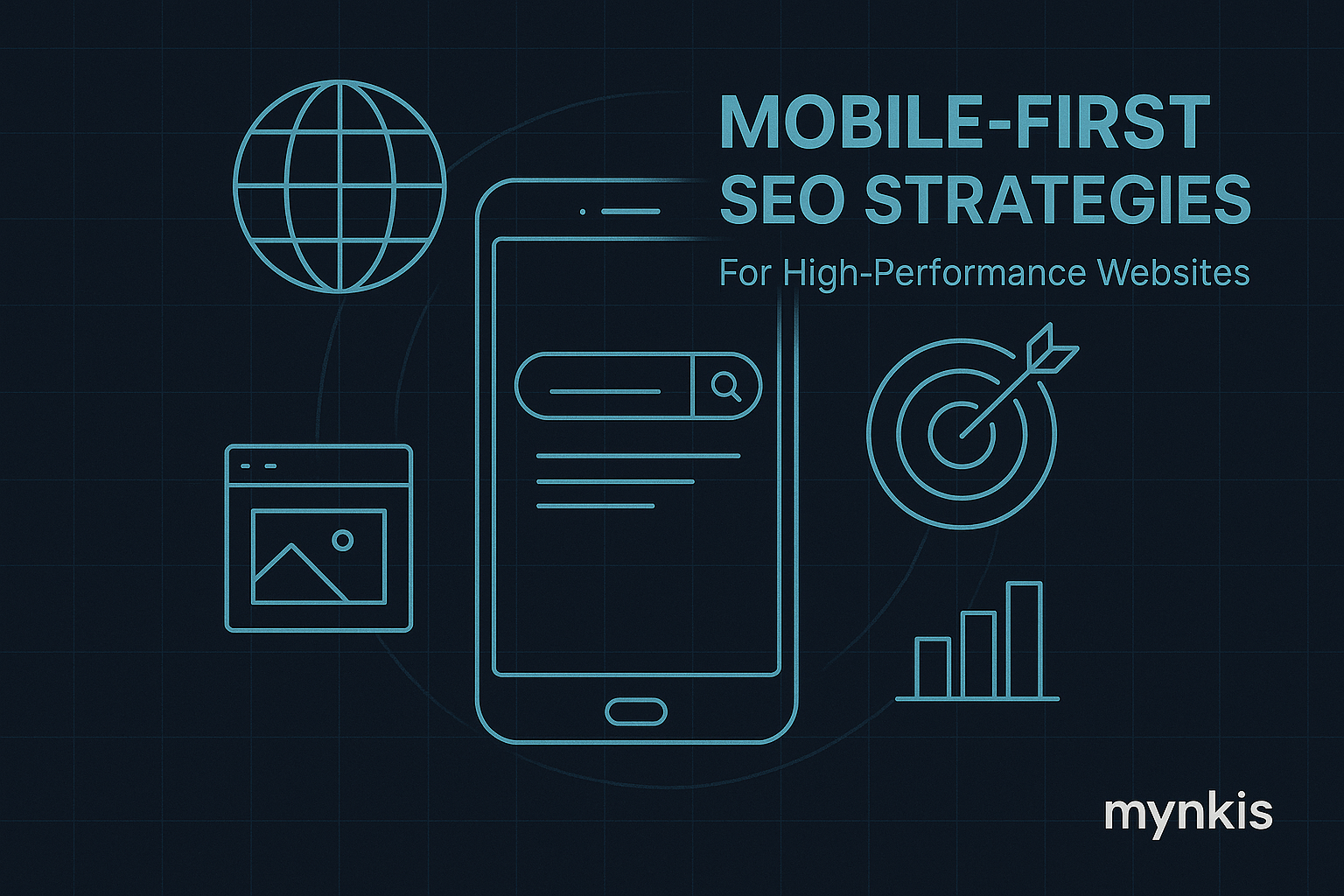Schedule a Demo
Let's jump straight into why mobile-first SEO is more than just a trend—it's a requirement. As your enterprise moves towards crafting custom software solutions, understanding and implementing mobile-first SEO becomes essential. With over half of the global web traffic coming from mobile devices, businesses must tailor their websites to excel in mobile environments. Google, the gatekeeper of search, prioritizes mobile-friendly sites in its search rankings. This means if your site isn't optimized for mobile, you're not just losing out on user experience; you're missing out on valuable traffic and potential customers.
In my experience, I've seen many clients initially dismiss the importance of mobile-first design until they start seeing the effects on their search rankings and user engagement. The foundational step for any high-performance website intended for mobile users is responsive design. This isn't just making your desktop site smaller; it's about adapting your site's structure and content to ensure it's user-friendly and readable on the smallest screens.
Let's not sidestep the crucial issue of site speed. According to research by Google, 53% of mobile site visits are abandoned if pages take longer than three seconds to load. It's a harsh but undeniable fact that fast-loading sites, especially on mobile, hold the advantage. Optimize images, leverage browser caching, and invest in a robust Content Delivery Network (CDN) to ensure your custom solutions are lighting-fast on mobile devices.
Have you ever tried using a site on your smartphone only to find buttons too small to press or menus too cramped to navigate easily? As an enterprise, you can't afford this lack of user-friendly design. Designing with touch in mind means larger, easy-to-tap elements, simplified navigation, and minimized input forms. Each of these elements helps cater to mobile users and enhances the overall user experience.
A robust content strategy for mobile goes beyond just readability. Content needs to be engaging, concise, and optimized for quick consumption. That old adage, 'less is more,' rings true here—particularly because attention spans on mobile devices tend to be shorter. Deploy strategies like using AMP (Accelerated Mobile Pages) to enhance mobile content performance. This can dramatically speed up load times, helping keep users engaged and reducing bounce rates.
I've worked with clients across the board, from startups to S&P 500 companies, and what becomes immediately apparent is that user experience (UX) on mobile drives SEO success. A positive UX not only impacts direct metrics like dwell time and click-through rates but also indirectly affects SEO through better social shares and higher engagement. Make your site's mobile UX your north star when designing for enterprise-level tools or customer portals.
Local SEO has an important place at the table when considering mobile SEO strategies. With over 46% of all Google searches having local intent, especially when coming from mobile, businesses must harness the power of local search optimization. That means having a clear address and phone number, encouraging local reviews, and ensuring you're listed in Google My Business to maximize your local presence.
Voice search is growing by leaps and bounds on mobile devices. As more people opt for voice commands over typing, ensuring your content is optimized for voice search becomes more critical. This often involves focusing on long-tail keywords and crafting content in a conversational manner that matches how people typically phrase queries when using voice commands.
When strategizing for SEO, backlinks remain a critical factor, and their importance doesn't diminish on mobile. Yet, securing high-quality backlinks for mobile versions of your site can be a bit trickier. Focus on creating valuable, mobile-optimized content that naturally attracts backlinks from authoritative sites in your industry. This also improves your site's relevance and authority on mobile search.
Navigating Google's ever-evolving SEO algorithms requires a keen understanding of how mobile impacts SEO. Google's updates often reflect the increasing importance of mobile search. Leverage tools like Google's Mobile-Friendly Test to audit your site and stay ahead of these changes. Make adjustments based on your findings to keep your site within the favorable side of search engine algorithms.
Effective SEO hinges on data. Utilizing mobile-specific analytics can guide your SEO efforts with precision. Focus on metrics such as mobile page load times, bounce rates, and conversion rates to understand where improvements are needed. This data-driven approach to mobile SEO helps fine-tune your strategies, ensuring your custom solutions meet the mark.
Mobile-first indexing now dictates how Google indexes and ranks your site. If your desktop version differs significantly from your mobile version in terms of content or design, you risk falling behind in search rankings. Ensure your mobile site offers the same rich, valuable content as your desktop version, but tailored to the mobile user experience.
Staying ahead in mobile SEO involves a continuous cycle of learning and adapting. The technologies and preferences driving mobile use are in constant flux. From the rise of 5G to the increasing use of AI in mobile browsing, your enterprise must be ready to adapt its mobile SEO strategies to stay competitive and relevant.
Mobile-first SEO doesn't succeed in a vacuum. It requires a collaborative effort across various departments—from development to marketing and beyond. Foster an environment where SEO insights can inform broader business strategies, creating a cohesive approach to improving your mobile user experience and search performance.
The tech landscape offers a plethora of tools and platforms to bolster your mobile-first SEO. From SEO audit tools like SEMrush to customer analytics platforms like Mixpanel, leveraging the right technology can significantly enhance your mobile SEO efforts. Stay current with technological trends and adopt solutions that best meet your business's needs for a seamless mobile user journey.
